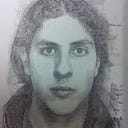Recommended Editor Layout for a more productive workflow
Some painting palettes are small and hold up to five colors while bigger boards hold a broader variety of colors, providing more surface to mix paint. In a similar way, the Unity Editor is adjustable to different workflows. The editor displays on different windows (or “panels”) all the enabled work stations that this workshop, the Unity Editor, provides. You may reduce the entire editor to one single panel, or even detach one of these windows into an independent floating panel.
This is the default view. It is centered with the scene and game panels into one window. To the left sits the hierarchy tab with the project and console underneath. This is great because you might constantly and repeatedly select and drag objects from the project panel into the hierarchy or the scene view. Inspector on the right serves great to tweak any object or objects you’ve selected anywhere. This layout is simple since the mouse movement feels intuitive across the screen.
The 4 Split layout could be useful for testing code that locates objects in precise relation to each one of the axes. The layout provides three scene views on a 2D perspective, each according to x, y or z; the fourth scene window displays the 3D perspective where you may navigate around by using “wasd”. I would imagine this layout to be very useful when tweaking the movement script for projectiles and obstacles that move along a specific axis or working on an animation.
This custom layout provides a wide view on the game and scene panels. Having the hierarchy and project panels next to the inspector makes development much faster. With these 3 columns, the scale of these windows are easy to adjust.
The tall layout shares similar attributes but gives a bigger picture of the scene (or game) by only showing one big window to the world you’re creating. I would say most of my workflow swaps from my “custom” layout to the “tall” one depending how frequently I am testing the game through the play button or if I’m dedicating more time to world building or lighting without constantly testing game play. The different stages of game development will constantly ask you to adapt your workflow to the different needs of each task, let that adaptability serve you well.
Here is the link to another medium article I wrote about Risk at Light, the result of a VR Game Jam at Udacity. In this first screen shot I was using the tall layout to adjust the position and rotation of individual objects across the map; all of these objects, except for the black walls, function as “climbable” objects that allow the player to hang on to them with the hand controllers. This layout provided a close and intimate perspective to each object, optimizing the individual iterations done to the local position and rotation.
This second screen shot of Risk at Light highlights all the “climbable” objects in the scene after prototyping; it quickly gives the developer a complete perspective of the players path in this level and helps brainstorm ideas for the surroundings. It is useful for iterating a group of objects at the same time, making tweaks to the global transforms of multiple objects.
The editor’s layouts are a commodity that most software do not provide to such extend as Unity does. The layouts may save you from pain in the eyes or leaving an object misplaced in your scene.
